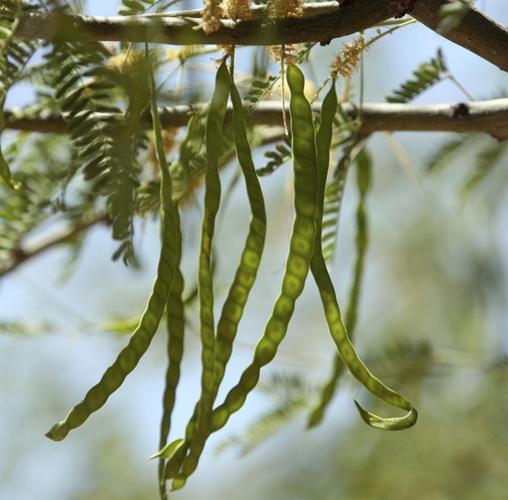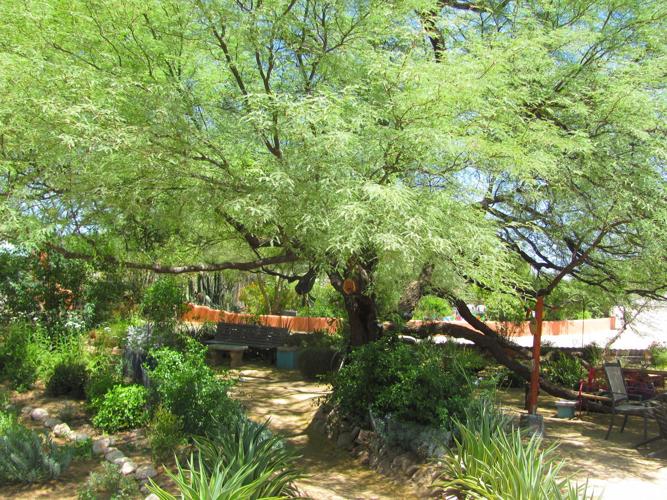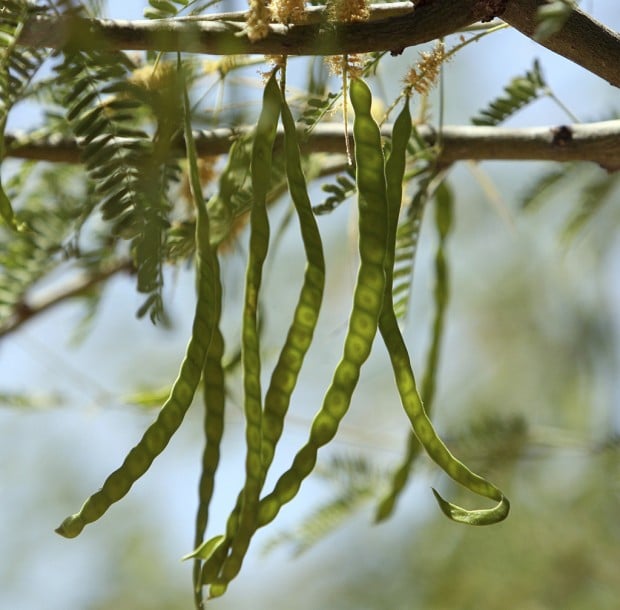August is a great time to plant native plants. The sunshine, heat and extra rains are a boon for plants. In particular, it’s the perfect time to plant a native tree.
The Sonoran Desert has many gorgeous native trees, but none are as iconic as our three native mesquites. The name comes from an Aztec word, mizquitl. They are rugged, beautiful, drought-tolerant and give lovely shade to your garden. They are legumes, which means they fix nitrogen — take it out of the atmosphere and bring it into the soil — which is great for other plants near them. All are great wildlife plants. They are not toxic to pets or people.
On the down side, they may have aggressive roots and ideally should be planted at least 20 feet away from structures and any plumbing or septic systems. They can also break off branches in storms, partly due to their wide spread. However, these two characteristics are much more likely for non-native Chilean mesquites, or non-native hybrids. Non-native hybrids are also more likely to blow over in storms, another great reason to go with the native trees.
Mesquite trees are messy — they are winter-deciduous, so they lose leaves around February and also shed flowers and seed pods. They are also quite thorny. Mesquites are thus best for larger yards with the space to have them out of the way of patios, walls and other structures. The trees are labeled as allergenic, but this is somewhat questionable, as their pollen is sticky and does not easily spread in the wind.
Each of the mesquite species native to our desert has its own personality, and choosing the correct one for your yard is important. It's also important to note that, because mesquites hybridize with each other very readily, it may be difficult to get a "pure" species at your average nursery. You will need to find ones grown by reputable local nurseries that can vouch for where the seeds were collected. Spadefoot Nursery and Desert Survivors are great places to look for these trees.

This lovely large mesquite provides lots of shade as well as native animal habitat.
Velvet mesquite
Formerly Prosopis velutina, now Neltuma velutina
This is an excellent wildlife tree and also our largest mesquite. It can grow 30 to 50 feet tall with similar spread, so it requires a lot of space. If you have space for this tree, you will get a lot of bang for your buck.
It produces lots of pollen and nectar, which is great for pollinators as well as for many other insects. It’s a host plant for several native butterflies, as well. It’s also excellent for humans: the beans are edible if ground into flour, the wood is great for flavorful grilling, the nectar and pollen are great for honeybees, and the plant has medicinal uses, as well. The dark sap that drips from cuts can stain patios, so keep that in mind. However, it can also be used medicinally or even to make candy.
This tree hybridizes easily with non-native species. It requires full sun and well-draining soil. It is a relatively fast grower. Care must be taken to give this tree very deep watering (3 feet down) to encourage the growth of deep roots. This will reduce the chance of it blowing over. It is hardy to at least 10 F.
Honey mesquite
Formerly Prosopis glandulosa, now Neltuma glandulosa
This mesquite is usually around 20 to 30 feet tall, although it may grow taller if it's particularly happy. It frequently grows as a large shrub, and is difficult to train and shape, so it’s best for gardens that have a bit of a wild look. The leaves are larger and more intensely green than those of the velvet mesquite. It’s hardy to around 0 F. It tolerates many different types of soils, including caliche. Full sun is best.
The plant will need to be deeply and regularly watered while young if you hope for it to become a tree, otherwise it will remain in shrub form. Like its cousins, it hosts several native butterflies as well as providing pollen and nectar. The pods can be ground up and used for flour just like the velvet mesquite, although reportedly velvet mesquite pods are better-tasting.
This tree hybridizes easily with the velvet mesquite.
Screwbean mesquite
Formerly Prosopis pubescens, now is Strombocarpa pubescens
This tree is smaller, often around 15-20 feet tall and nearly as wide, but it can grow to 30 feet tall if it’s really happy. The beans are twisted around and look like tan curlicues. Being a riparian tree, it requires more water than its relatives, and prefers moderate water once established. It grows more slowly than its cousins, also.
It provides great food and habitat for wildlife, similar to its relatives. It is more rare now, partly because our water table has dropped and the trees can no longer reach it and many have died out. It’s a great smaller tree to add to your yard, but keep in mind that you will still need to keep the roots away from structures.
Are mosquitoes ruining your outdoor gatherings? Here are four ways to prevent mosquitoes from invading your garden.






